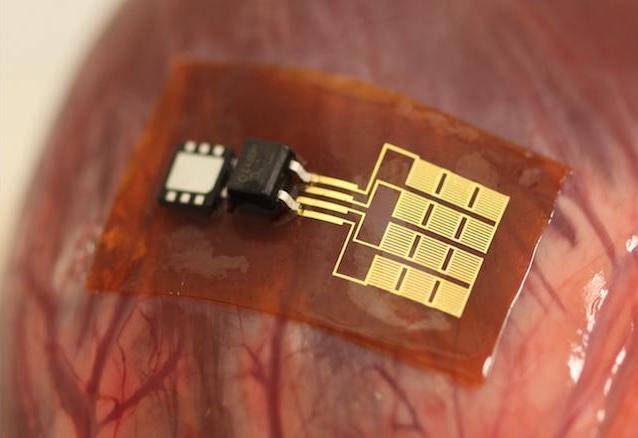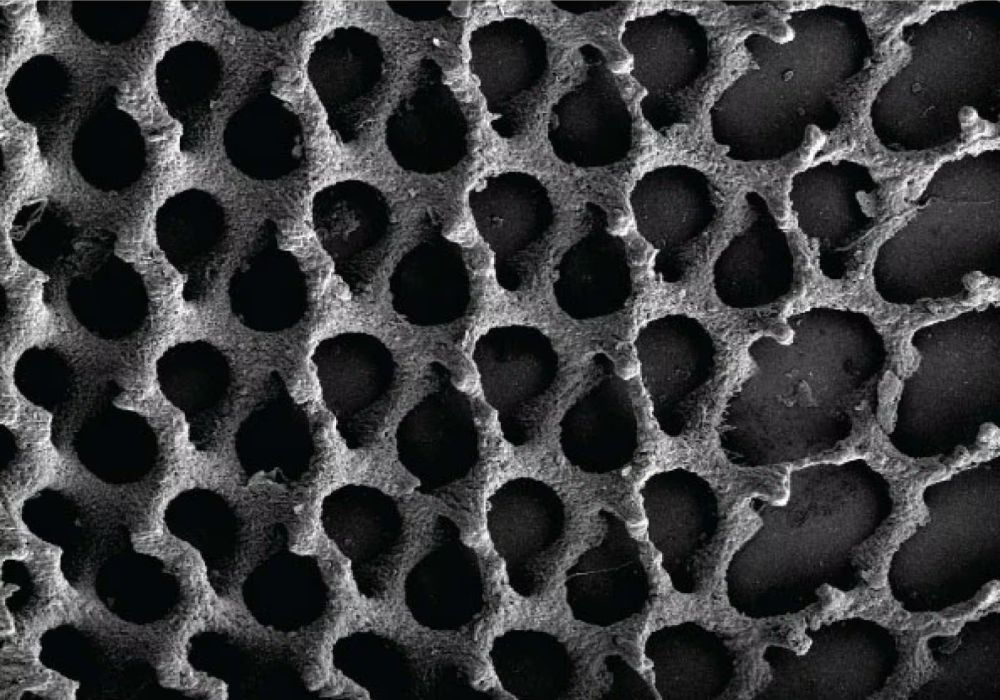

Flexible thin film containing gold PZT ribbons for mechanical energy harvesting from organs. Credit: John Rogers, UIUC.
What if your pacemaker could be powered by the beating of your own heart? If that seems like a symbiotic relationship out of science fiction, think again—it may be closer than you think.
A new kind of biomedical electronic device has been published in the latest issue of the Proceedings of the National Academies of Science that can convert mechanical energy from the body’s autonomic functions into electrical energy.
Despite significant technological advancements, current biomedical electronic devices, like pacemakers, heart monitors, and neural stimulators, still rely on batteries. Those batteries eventually die and need to be replaced, and in the case of implantable devices, battery-replacement surgeries are costly and put patients at risk of complications and infections.
This new device, called a “mechanical energy harvester”, or MEH, could eliminate the need for batteries in biomedical electronic devices altogether. MEH devices harness the body’s natural mechanical energy by converting the motion of a beating heart, inflating lungs, or a contracting diaphragm into electrical energy.
The MEHs are composed of thin ribbons of layered lead zirconate titanate (PZT) sandwiched between titanium/platinum and chromium/gold electrodes and encapsulated in a biocompatible polyimide coating, allowing adherence to the unique surfaces of individual organs (see featured image above). PZT converts mechanical strain to electricity, so the natural rhythms of a beating heart, for example, generate energy that the devices can capture and store in an onboard chip-scale rechargeable battery (black and silver box in the featured image above; black box is a rectifier). That energy can then be used to power devices, such as pacemakers, eliminating routine battery–changing procedures.
The research team, a collaboration between the University of Illinois, Northwestern University, the University of Arizona, and Tsinghua University in China, tested the devices on the organs of sheep, pigs, and cows, which are similar in size to human organs. The next steps will be to test the devices in long-term applications and prepare them for the move to human bodies. While they are not quite ready for clinical trials, senior author of the study John Rogers noted their work represents important advances. “We established a theoretical framework for quantitatively understanding the device operation, to enable optimized construction,” he said in an email.
The paper is entitled “Conformal piezoelectric energy harvesting and storage from motions of the heart, lung, and diaphragm.”
Author
April Gocha
CTT Categories
- Biomaterials & Medical
- Electronics


